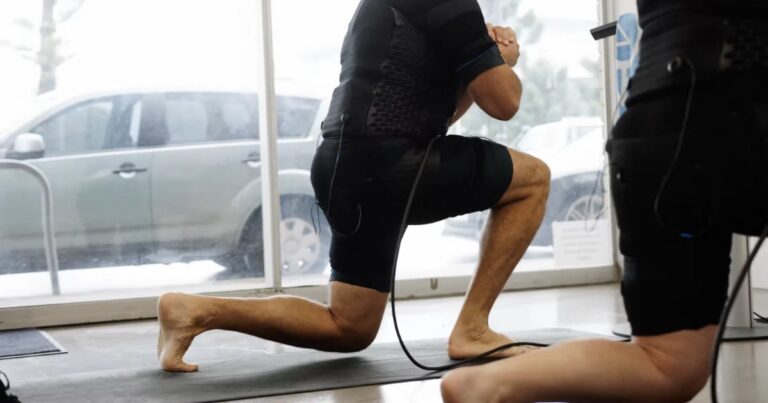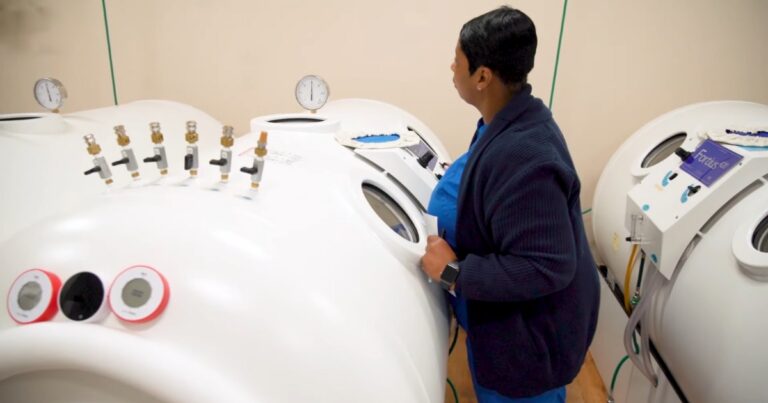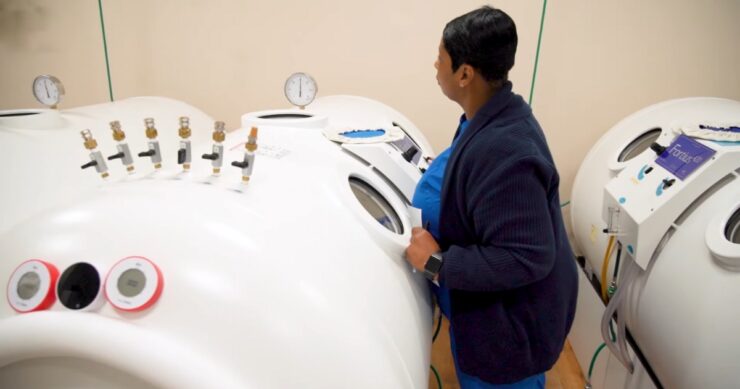In the ever-evolving landscape of health and fitness, a revolutionary method known as Electrical Muscle Stimulation (EMS) training has been making waves.
This innovative approach to exercise has garnered attention for its efficiency and effectiveness, promising significant fitness results with less time commitment than traditional workouts.
Summary
At its core, TrainWithUS offers EMS training with cutting-edge exercise technique that uses electrical impulses to stimulate muscle contractions. This is achieved through a wearable device that sends low-level electrical currents to muscles, mimicking the action potential that comes from the central nervous system.
Unlike conventional exercise methods, EMS activates muscles in a synchronized manner, ensuring a highly efficient workout that can target specific muscle groups or the entire body.
The premise of EMS training is not entirely new. In fact, the use of electrical stimulation for therapeutic purposes dates back to ancient times, with the modern iteration of EMS technology finding its place in rehabilitation and professional sports training rooms.
Amplified Efficiency

One of the most compelling advantages of an EMS workout is its efficiency. In a world where time is a precious commodity, this method offers a solution for those struggling to fit exercise into their busy schedules.
A typical EMS workout can last as little as 20 minutes, yet it can yield results comparable to several hours of traditional strength training. This efficiency is due to the simultaneous activation of multiple muscle groups, including those that are often neglected in conventional workouts.
Enhanced Strength and Endurance
EMS training is renowned for its capacity to enhance muscular strength and endurance. Applying electrical stimulation directly to the muscles, it ensures a higher degree of muscle engagement than traditional exercises. This leads to an increase in muscle mass and strength over time.
Furthermore, EMS training can be tailored to suit individual fitness levels and goals, making it a versatile tool for improving physical performance.
Injury Rehabilitation and Prevention

Another significant benefit of EMS workouts lies in their role in injury rehabilitation and prevention. By allowing for targeted muscle activation without the need for heavy lifting, it reduces the strain on joints and tendons.
This makes it an ideal workout for those recovering from injuries or looking to avoid them. Additionally, EMS can help correct muscular imbalances, a common cause of injuries among athletes and fitness enthusiasts.
Embarking on an EMS training journey can be an exciting prospect, but success requires more than just enthusiasm. Here are some tips to maximize the benefits of EMS workouts:
- Start with Professional Guidance: It’s crucial to begin your EMS training under the supervision of a certified professional. They can tailor the intensity and focus of the workout to your individual needs, ensuring a safe and effective session.
- Set Realistic Goals: As with any fitness program, setting achievable goals is key to maintaining motivation and tracking progress. Whether it’s improving muscle tone, increasing strength, or enhancing overall fitness, clear objectives can help you stay focused.
- Consistency is Key: Regular sessions are essential to reap the full benefits of EMS training. While the time commitment is minimal compared to traditional workouts, consistency remains a critical factor in achieving lasting results.
- Maintain a Balanced Diet: Nutrition plays a vital role in maximizing the effects of this workout. A balanced diet rich in protein, healthy fats, and carbohydrates can support muscle recovery and growth, enhancing the overall effectiveness of your workouts.
- Stay Hydrated: Adequate hydration is important for optimal muscle function and recovery. Ensure you drink plenty of water before and after your EMS sessions to keep your muscles well-hydrated.
- Listen to Your Body: While EMS training is generally safe, it’s important to listen to your body and communicate with your trainer. If you experience discomfort beyond the expected muscle fatigue, it’s crucial to adjust the intensity or reevaluate your training plan.
FAQs
Can EMS training replace traditional cardio workouts?
EMS training primarily focuses on muscle strengthening and toning rather than cardiovascular fitness. While it can improve overall fitness levels and has some impact on cardiovascular health due to its intensity, it should not be viewed as a complete replacement for traditional cardio workouts. Incorporating both EMS and cardio into your fitness regimen can provide a well-rounded approach to health and fitness.
Is there anyone who should avoid EMS training?
Yes, certain individuals should exercise caution or avoid EMS training altogether. This includes people with heart pacemakers, those suffering from severe neurological disorders, pregnant women, and individuals with implanted defibrillators or other electronic devices. It’s always recommended to consult with a healthcare provider before starting any new exercise program, especially one involving electrical stimulation.
How often should I undergo EMS training to see results?
For optimal results, it’s recommended to undergo the training once or twice a week. This allows sufficient time for muscle recovery while ensuring the frequency is adequate to achieve fitness goals. The exact frequency can vary based on individual fitness levels, goals, and the advice of a professional EMS trainer.
Can EMS training help with weight loss?
EMS training can be a component of a weight loss strategy. By increasing muscle mass and improving metabolic rate, this training can help burn more calories, even at rest. However, weight loss is most effectively achieved through a combination of regular exercise, which can include EMS training, a balanced diet, and a healthy lifestyle.
What should I wear during an EMS training session?
Most EMS training providers will supply special attire that is designed to be worn during the workout. This attire is typically made of a light, breathable fabric that facilitates the effective transfer of the electrical impulses to the muscles. It’s important to wear this specific outfit for safety and hygiene reasons, as well as to ensure the effectiveness of the workout.
Does EMS training cause muscle soreness?
Yes, like any effective workout, EMS training can cause muscle soreness due to its intensive nature and the deep muscle contractions it induces. This soreness is similar to what one might experience after traditional strength training and is a normal part of the muscle adaptation and growth process. Adequate rest, hydration, and proper nutrition can help alleviate this soreness more quickly.
Final Words

EMS training stands at the forefront of fitness innovation, offering a time-efficient, effective, and versatile workout option. Its benefits extend beyond mere muscle development, encompassing injury rehabilitation, prevention, and enhanced physical performance.
By adhering to the tips provided and approaching EMS training with dedication and an open mind, individuals can unlock their full fitness potential. As we continue to seek out efficient and effective ways to maintain and improve our health, EMS training represents a promising avenue, merging ancient principles with modern technology to redefine the boundaries of physical fitness.
Related Posts:
- Mushrooms Unveiled: Exploring the Benefits and a…
- Magic Mushroom Edibles - Benefits, Trends and Safety…
- The Benefits and Health Considerations of Adult…
- Whisky benefits and side effects on Your Health
- Non-alcoholic beer benefits: Health and Wellness
- Preparing and Passing PTE Academic: Pro Tips for Success











